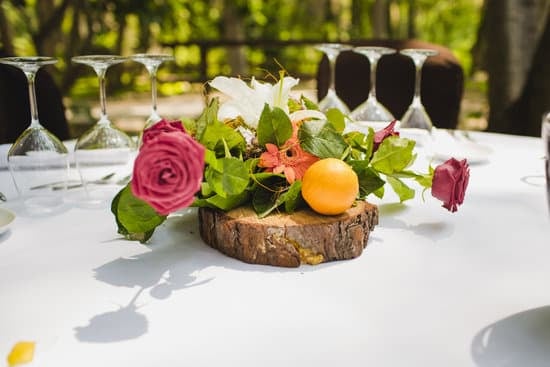The tradition of exchanging rings during wedding ceremonies dates back centuries, and the symbolism behind these bands is deeply ingrained in many cultures around the world. Both engagement and wedding rings hold great significance, representing love, commitment, and unity between two individuals. In this article, we will delve into the history, cultural importance, and modern trends surrounding these timeless symbols of love.
One common question that often arises when it comes to wearing these meaningful pieces of jewelry is “which ring goes first, wedding or engagement?” The answer to this question may vary depending on cultural traditions and personal preferences. Throughout this article, we will explore the significance of both types of rings, shedding light on the differences in their design and purpose.
Before delving into the historical background and cultural significance of wedding and engagement rings, it is important to understand the distinction between them. While both rings symbolize a couple’s commitment to each other, they serve different purposes and are worn at different times within the context of a relationship. Understanding these differences can provide insight into why one ring is traditionally worn before the other.
The History of Wedding and Engagement Rings
The tradition of exchanging wedding rings dates back to ancient Egypt and Rome, where rings were symbolic of eternity. The circular shape represented never-ending love, and the ring was worn on the fourth finger of the left hand, which was believed to have a direct vein to the heart.
Similarly, engagement rings have a rich history, with evidence of their use dating back to ancient Rome as well. The use of engagement rings became more widespread in the 19th and early 20th centuries with the discovery of diamonds in South Africa and the subsequent marketing campaigns by diamond companies.
The concept of both wedding and engagement rings has evolved over time, taking on different forms and meanings in various cultures around the world. In some countries, engagement rings may not be as common as in Western societies, while in other cultures intricate designs and gemstones are favored for both engagement and wedding rings.
In terms of historical significance, wedding rings symbolized a legally binding agreement between spouses, while engagement rings were seen as a promise or betrothal between two people. Over time, these distinctions have become less rigid, and individuals now choose rings based on personal preferences rather than strict adherence to historical customs.
| Wedding Rings | Engagement Rings |
|---|---|
| Symbolic of eternity | Historically a betrothal promise |
| Worn on the left hand’s fourth finge | Became widespread during late 19th century and early 20th century. |
The Difference Between Wedding and Engagement Rings
When it comes to wedding and engagement rings, it’s important to understand the key differences between these two types of jewelry. Both serve different purposes and have distinct designs that symbolize various stages of a couple’s relationship. Understanding these differences can help couples make informed decisions about their ring choices.
The design of an engagement ring typically features a center gemstone, such as a diamond, which is often set on a band. This ring is traditionally given during a proposal and serves as a symbol of the couple’s commitment to getting married.
On the other hand, a wedding ring, also known as a wedding band, is exchanged during the marriage ceremony itself. Wedding rings are usually simpler in design compared to engagement rings and may be made from precious metals like gold or platinum.
In terms of purpose, an engagement ring signifies the intention to marry, while a wedding ring represents the actual union of marriage. This distinction is reflected in the timing of when each ring is given and worn.
Engagement rings are worn before the wedding as a sign of commitment and are typically placed on the fourth finger of the left hand. After exchanging vows during the wedding ceremony, couples then wear their wedding bands on the same finger, often stacked with or alongside their engagement ring.
- Engagement rings typically feature a center gemstone
- Wedding rings are exchanged during the marriage ceremony itself
- An engagement ring signifies the intention to marry
- A wedding ring represents the actual union of marriage
Understanding these distinctions can help couples navigate the process of choosing and wearing their wedding and engagement rings with confidence and clarity. By embracing both traditions and understanding their significance, couples can fully appreciate the symbolism behind these timeless symbols of love and commitment.
Traditions and Customs
Significance of Wedding and Engagement Rings
Wedding and engagement rings hold significant cultural and religious importance in many societies around the world. These rings symbolize the commitment, love, and fidelity between two individuals. The act of exchanging rings is a traditional part of marriage ceremonies, representing an unbroken circle of love and unity.
Order of Wearing Rings
One common question that often arises is which ring goes first, wedding or engagement? Traditionally, the engagement ring is worn first followed by the wedding ring. The reason for this order is that the engagement ring is symbolic of the promise to marry, while the wedding ring represents the actual union in marriage.
Cultural and Religious Significance
In some cultures, such as in Western traditions, it is customary for the bride to wear both her engagement and wedding rings on her left hand, with the wedding band closer to her heart. However, in other cultures like in Orthodox Christianity, couples may wear their wedding bands on their right hand.
The placement and order of wearing these rings can also be influenced by individual beliefs or customs. Understanding these cultural and religious differences can bring deeper meaning to the wearing of wedding and engagement rings.
Modern Trends
In recent years, the tradition of wearing wedding and engagement rings has evolved in various ways. Modern trends have seen a shift towards personalization and creativity when it comes to choosing and wearing these meaningful pieces of jewelry. Couples are now opting for unique and unconventional designs that reflect their individual styles and preferences rather than adhering to traditional norms.
One modern trend that has gained popularity is the concept of stackable rings. Instead of following the conventional practice of wearing separate wedding and engagement rings on different fingers, many couples are choosing to wear multiple rings together as a set.
This can include combining the wedding band with the engagement ring or adding additional bands to create a customized look. The versatility of stackable rings allows for endless possibilities in terms of styling, allowing couples to express their love and commitment in a way that is truly their own.
Another contemporary trend in the world of wedding and engagement rings is the rise of non-traditional gemstones. While diamonds have long been the go-to choice for engagement rings, more couples are now embracing colored gemstones such as sapphires, emeralds, and rubies as a symbol of their love. These vibrant alternatives add a unique touch to the traditional concept of engagement rings, showcasing a shift towards individuality and self-expression within the realm of matrimonial jewelry.
Additionally, there has been an increasing focus on sustainability and ethical sourcing within the jewelry industry. Many modern couples are prioritizing eco-friendly and socially responsible practices when selecting their wedding and engagement rings. From recycled metals to ethically mined gemstones, there is a growing awareness among consumers about the impact of their purchasing decisions. As a result, more jewelry designers and brands are offering environmentally conscious options which align with the values of today’s couples.
Etiquette and Rules
When it comes to wearing wedding and engagement rings, there are certain etiquette and rules that should be followed to ensure the proper display of these meaningful symbols. Many people often wonder, “which ring goes first, wedding or engagement?” This section will provide guidance on the correct way to wear wedding and engagement rings, including the order in which they should be worn.
Order of Wearing Rings
Traditionally, the engagement ring is worn first, followed by the wedding ring. The reason for this is that the engagement ring is seen as a promise of commitment before marriage, while the wedding ring symbolizes the actual union of marriage. It is customary for the engagement ring to be placed on the finger first during the proposal, with the wedding band then added during the marriage ceremony. This order signifies the progression from dating and engagement to marriage.
Wearing Both Rings
After the wedding ceremony, both rings are worn together on the same finger. Some people choose to wear their engagement ring on top of their wedding band, while others prefer to wear it underneath. There is no strict rule about which ring should be on top; it ultimately comes down to personal preference. However, many jewelers recommend putting the wedding band closest to your heart as a symbolic gesture.
Legal Implications
In some countries or states, there may be legal implications regarding how wedding and engagement rings should be worn. For example, in some places, once a couple gets married, their engagement ring may legally become part of their marital assets if not clearly distinguished as a separate pre-marital gift. It’s important for couples to understand any legal ramifications when deciding how to wear their rings after getting married.
Understanding and following these etiquette and rules can help couples navigate how to properly wear their wedding and engagement rings. While there are traditional guidelines to follow, ultimately it is up to each individual or couple to decide what feels right for them in terms of displaying these cherished symbols of love and commitment.
Personal Stories
For many couples, the exchange of wedding and engagement rings is a deeply personal and meaningful experience. The tradition of wearing these rings symbolizes love, commitment, and the promise of a lifetime together. In this section, we will explore the unique stories of real couples and their experiences with wearing wedding and engagement rings.
One common theme among couples is the significance of the engagement ring as a symbol of the decision to spend their lives together. Many individuals shared that the moment of receiving or presenting an engagement ring was one of great joy and anticipation for the future. For some, it represented a long-awaited commitment, while for others it marked the beginning of an exciting new chapter in their relationship.
In terms of which ring goes first, wedding or engagement, there were varied perspectives among our participants. Some couples chose to wear their engagement ring on their left hand until they exchanged vows, at which point they moved it to their right hand to make room for the wedding band.
Others opted to wear both rings on one finger, with the wedding band typically worn closer to the heart. These personal stories highlight the individuality and sentimentality that comes with wearing wedding and engagement rings.
| Engagement Ring | Wedding Band |
|---|---|
| Marked a significant commitment for many couples | A symbol of marriage and unity |
| Worn on different fingers based on personal preference | Moved to be worn alongside the engagement ring after marriage |
Conclusion
In conclusion, the significance of wedding and engagement rings is deeply rooted in tradition and symbolism. The history of these rings dates back centuries, each with its own unique origins and cultural significance. While the design and purpose of wedding and engagement rings may differ, both hold sentimental value as symbols of love, commitment, and partnership.
Throughout history, various traditions and customs have dictated the proper way to wear wedding and engagement rings. In many cultures, the engagement ring is traditionally worn first on the fourth finger of the left hand, followed by the placement of the wedding ring during the marriage ceremony. However, modern trends have brought about new interpretations and variations in how couples choose to wear these meaningful symbols.
Ultimately, while there are etiquette guidelines for wearing wedding and engagement rings, it is important for individuals to follow their hearts and make personal choices that hold meaning for them. Whether it’s following tradition or creating new customs, what matters most is the love and commitment symbolized by these timeless pieces of jewelry. Regardless of which ring goes first – wedding or engagement – what truly matters is the love shared between two people.
Frequently Asked Questions
Which Goes First Engagement and Wedding Ring?
The engagement ring typically goes first, followed by the wedding band. The idea is that the engagement ring represents a promise of marriage, so it is closest to the heart, with the wedding band being placed on top.
Do You Wear Your Wedding Band on Top or Bottom?
Traditionally, the wedding band is worn on the bottom, closest to the palm. This allows the engagement ring to be closer to the fingertips and more visible. However, some people choose to wear their wedding band on top for personal or aesthetic reasons.
In What Order Do You Wear Wedding Rings?
The typical order for wearing wedding rings is to first place the engagement ring on the finger, followed by the wedding band. If both rings are worn, they are usually stacked in this order from bottom to top: wedding band and then engagement ring. This order symbolizes the commitment made during the wedding ceremony.

I have been involved in marriages for over 20 years helping couples and singles understand more about them.





